Democrats Tighten Criteria for November And December Debates
The criteria for the November and December debate will make it much harder for some Democrats to get on the national stage. That isn't a bad thing.
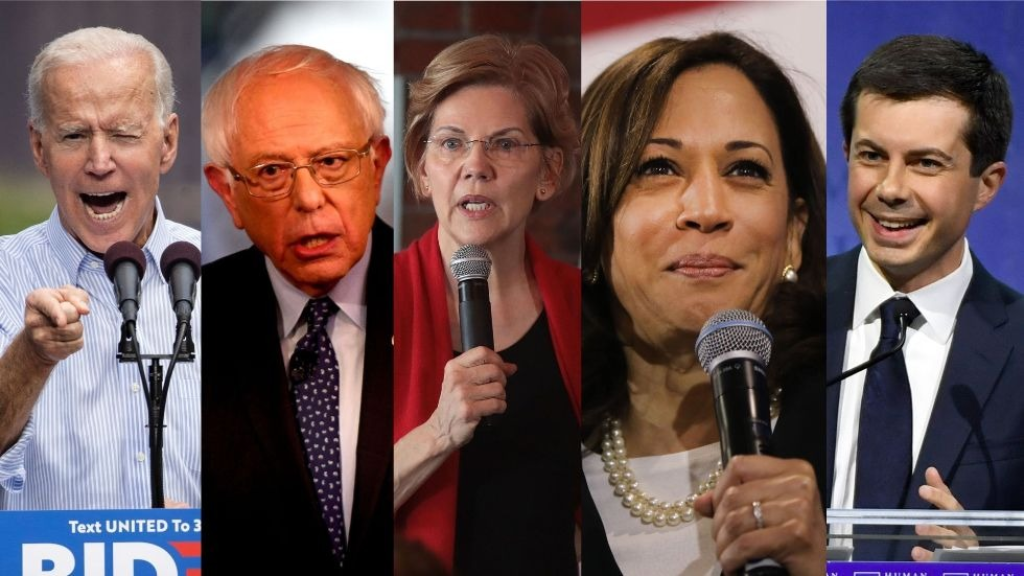
The Democratic National Committee has raised the threshold for eligibility for the debates that will take place in November and December, placing many more candidates in a position where it is likely that the upcoming October debate is likely to be the last time they qualify for a nationally-televised debate:
The Democratic National Committee has slightly raised the bar to qualify for the November primary debate in a move unlikely to significantly reduce the number of participating candidates.
Candidates will need to clear 3 percent in four DNC-approved polls, up from the 2 percent required to qualify for the September and October debates. But the committee also created an additional early-state path to qualify: garnering 5 percent in two approved polls conducted in Iowa, New Hampshire, Nevada or South Carolina.
Additionally, candidates now need to receive donations from 165,000 unique donors — up from 130,000 from the September and October debates — with 600 unique donors in 20 different states, territories or the District of Columbia.
The new thresholds represent the DNC’s latest attempt to balance its mandate to cull the field while also facing complaints about excluding candidates with impressive resumes, including sitting senators and governors, who could not meet the previous, lower polling and donor marks.
Even some of the major candidates who have appeared in each of the first three debates have been forced to adjust their strategies to boost their poll numbers or trawl for small-dollar donors on Facebook, often spending multiples more to advertise than the money they received in return.
The DNC has largely left the existing tests for the candidates in place, with only slightly higher bars for them to clear. For the main, 3-percent threshold, candidates still cannot count polls released by the same sponsor in the same geographical area twice. But under the higher, 5-percent path in the early states, candidates can repeat polls from the same sponsor in the same geographical area, a nod to the infrequency of early-state polls.
Polls must be released between Sept. 13 and seven days before the November debate — the timing or location of which has not yet been announced — to count toward qualification. The list of approved poll sponsors was tweaked slightly to specify news organizations that have polling partnerships. For example, NBC News’ partnerships with The Wall Street Journal and Marist College are included, but now excluded would be any NBC News/SurveyMonkey polls that counted toward the third and fourth debates.
Additionally, candidates now need to receive donations from 165,000 unique donors — up from 130,000 from the September and October debates — with 600 unique donors in 20 different states, territories or the District of Columbia. The deadline for the fundraising threshold is the same: seven days prior to the November debate.
As Michael Scherer notes at The Washington Post, these new criteria will make qualifying for future the debates far more difficult:
Sen. Amy Klobuchar (Minn.), former Housing and Urban Development secretary Julián Castro, and businessmen Andrew Yang and Tom Steyer are among those who could fail to qualify for the November debates if they do not improve their polling in the coming weeks.
Party Chair Tom Perez has been working to reduce the number of candidates at the debates since the first meeting in June, when he invited 20 to participate over two nights. The September debate had 10 qualifying candidates, and 11 have qualified for the next debate, which will be held Oct. 15 and possibly Oct. 16.
(…)
The higher thresholds effectively foreclose upon the hopes of rejoining the debate stage for many other candidates who failed to qualify for the September debates and remain unlikely to meet the October qualifications. Montana Gov. Steve Bullock, Sen. Michael F. Bennet (Colo.), former congressman John Delaney (Md.), Rep. Tim Ryan (Ohio) and author Marianne Williamson all appeared onstage in the summer events but have failed to qualify since then.
Rep. Tulsi Gabbard (Hawaii), who also dropped off the stage in September, has shown an ability to score 2 percent in some recent polls, and she needs only one more poll to qualify for next month’s debate. The rest of that group regularly poll at 1 percent or less. All have pledged, nonetheless, to continue their campaign.
Delaney, who has not polled over 1 percent in a party-approved survey in months, said he still sees a path to becoming president.
“The path is, the dynamics of the race change, which means a lot of people drop out, and people realize the top three polling candidates have vulnerabilities, which I think they do,” he said.
The Democratic National Committee plans to hold a total of 12 debates this nominating cycle, including monthly meetings for the rest of this year, and six more debates next year before the end of April.
These new standards are more generous than those that I put forward in my post earlier this week, which would have placed the polling threshold at 5% and the number of donors at 250,000, but they nonetheless seem to me to be entirely appropriate. Additionally, it’s obvious that the DNC is attempting to foreclose any allegations similar to those made during the 2016 cycle that it had used to the debate schedule to favor Hillary Clinton over
Late yesterday, it appeared that Hawaii Congresswoman Tulsi Gabbard had become the 12th candidate to qualify for the October debate thanks to the release of a new Monmouth poll out of New Hampshire showing her at 2%. What this means for the format of the debate is unclear. Either there will be one debate with twelve participants or there will be two nights of debates where the participants for each night are divided equally. That would mean two nights with six participants each, but it also makes it less likely that the top-tier candidates — Biden, Warren, Sanders, Harris, and Buttigieg — will be on the same stage together.
As for the other candidates who are unlikely to qualify for any of the debates beyond October, as I stated earlier this week the time has come for them to consider whether it’s worth staying in a race they obviously aren’t going to run, especially given the fact that the focus of that race is increasingly narrowing to a group of candidates that at least seems to have a realistic shot of making an impact in the early states. Nobody is suggesting they should be banned from running, of course, but at the same time, one does have to wonder what the point might be in continuing a quixotic quest that won’t accomplish anything.

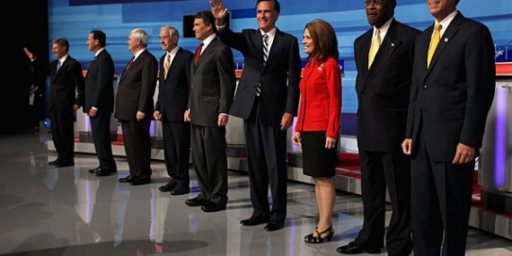
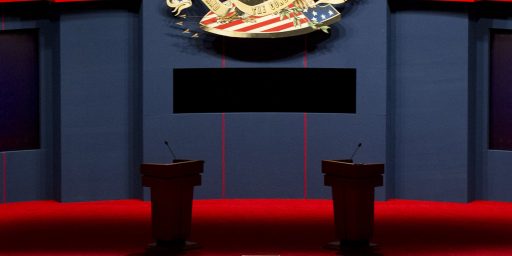
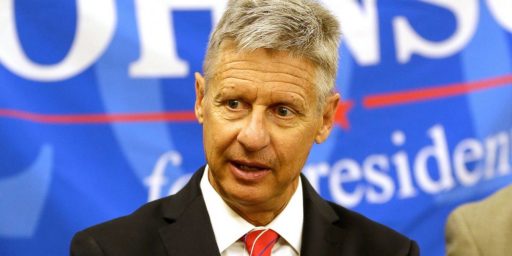
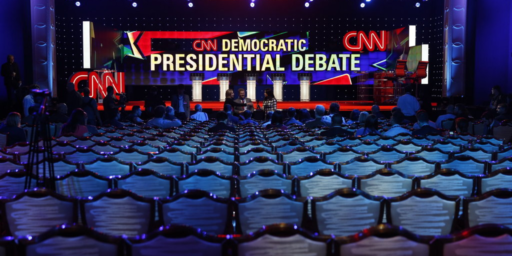
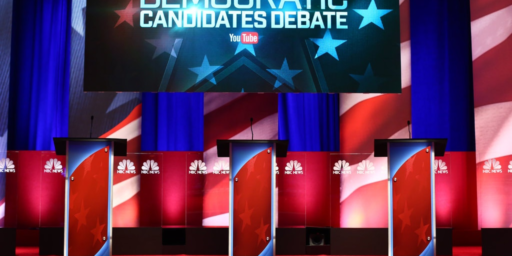
Maybe it’s time for the “children’s table” debate format the Republicans used. Certainly everyone has gotten a fair shot to be heard by now. So let’s have two nights of debates, one with everyone polling at, say eight percent and above, and one for everyone above two. That way we could see Biden, Warren, Bernie, and maybe Harris and Mayor Pete on stage together, and the true masochists could tune in on night two for the thrill-packed fight between Bullock and Delaney.
I still see no reason to try to narrow the field yet. The debates are large and unwieldy, but compared to all the other problems in our Republic Not A Democracy, it seems trivial.
There weren’t enough choices in 2016, with a long slog of Clinton and Bernie going on and on, and a whole host of people who were not thrilled with either. Going to a trio of Sanders, Biden and Warren leaves a bit to be desired for a lot of people. Harris is weak, and Buttigieg seems to have hit a ceiling, despite knowing how to make media eat from his hands.
It’s going to be a complicated few months. I have no idea if it would shake up the race given the opportunity. I don’t see minimizing the opportunity to be in our best interests.
Do you want a damaged Trump running against a Biden tainted by the appearance of conflict of interest?
——
I prefer Warren at this point. But if one of the moderate-liberal 1%ers rises to this occasion, that might be best for America.